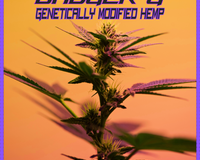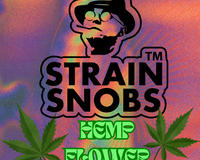The roots of cannabidiol, or CBD, extend back thousands of years to the end of the first ice age. Archaeological findings suggest that the source plant for the CBD compound, Cannabis sativa, was likely one of the first agricultural crops planted by early humans. In fact, growing Cannabis sativa, something we tend to think of as modern, is often associated with the birth of agriculture 12,000 to 10,000 years ago.

The astronomer Carl Sagan, an icon of scientific credibility, put forth the possibility that cannabis may have been the world's first agricultural crop, leading to the development of civilization itself. Looking at time lines, it is clear that cannabis plants have been integral to mankind since our earliest times.
Food, Medicine and More
Cannabis plants are exceptionally versatile. Both the seeds and cannabis oil were used for food in China as early as 6,000 BCE. Two thousand years later, in 4,000 BCE, there is evidence of textiles made from hemp (cannabis) used in both China and Turkestan. The influence of the plant seems to have been global. In 850, the Vikings transported hemp rope and seeds to Iceland, and by the year 900, Arabs were learning techniques for making paper from hemp. By 1000 (1015 years ago), Italians were using ropes made of hemp on their sailing ships.
Today, consumers are primarily interested in the healthful properties of cannabis compounds, and there is a long thread of cannabis applications for healing running through all eras of history. Stories about the healing properties of hemp (cannabis) mention Greek philosophers, Herodotus, Napoleon and other legendary figures. The physician for Nero’s army, for example, included cannabis in his medical inventory. In 1563, the medicinal benefits of cannabis were discussed in a report by Portuguese physician Garcia da Orta. A few years later, China's Li Shih-Chen documented the antibiotic and anti-nausea effects of cannabis.
A Mandated Crop
In contrast to today’s modern restrictions of growing Cannabis Sativa, England’s King Henry VIII actually fined farmers if they do not raise hemp for industrial use. This was in 1533. Less than one hundred years later, settlers in Jamestown, Virginia--the New World----began growing hemp plants for hemp’s unusually strong fiber. Once the plant demonstrated its usefulness, it became illegal to NOT grow hemp in Virginia.
By 1850, Cannabis was added to list of The U.S.Pharmacopeia, a respected compendium of Medicines and Dietary Supplements. That same year, marijuana was used throughout United States as a medicinal drug and could easily be purchased in pharmacies and general stores. This lasted until about 1915.
Seeds of Change
According to the North America Industrial Hemp Council (NAIHC), growing Cannabis Sativa, even for industrial hemp purposes, has been effectively prohibited in the United States since the 1950s. Things may be changing however. The explosion of interest in hemp derived compounds and products, most especially Cannabidiol (CBD), has motivated farmers and advocates across the U.S. to lobby for restoring the legal status of hemp as an agricultural crop in all 50 states. Currently, only a portion of U.S. states can grow hemp (Cannabis Sativa) legally, including Colorado the home of DiscoverCBD.com.
We are committed to providing you with the best information, as well as the best products. If you have a question or comment regarding CBD, let us know, and we will respond right away. In the meantime, sign up for our newsletters and visit our website regularly for the latest updates on research, legislation, and other news impacting your access to Cannabidiol.
Thank you for taking the time to read our blog! To get your very own Active CBD products, come into any one of our Discover CBD stores, on the web at discovercbd.com, facebook, or by simply calling us at, 719-358-7553 to place an order!

























